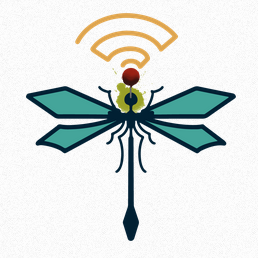Some of the mitigations recommended by the Wi-Fi Alliance in response to Dragonblood, a set of WPA3 vulnerabilities that can be exploited to obtain a Wi-Fi network’s password, are not efficient in preventing attacks, and launching an attack is much cheaper than initially estimated.
Version 3 of the Wi-Fi Protected Access (WPA) protocol, officially launched in June 2018, provides better protection against offline dictionary attacks and password guessing attempts, improved security even if a less complex password is used, and forward secrecy to protect communications in case the password has been compromised.
Earlier this year, researchers Mathy Vanhoef and Eyal Ronen revealed that they had identified some serious vulnerabilities after analyzing WPA3’s Simultaneous Authentication of Equals (SAE) handshake, which is commonly known as Dragonfly. They dubbed the flaws Dragonblood.

They discovered two types of issues that can allow someone to recover the password of a Wi-Fi network. They found that WPA3 is vulnerable to downgrade attacks, which can be leveraged to force clients into using weaker security mechanisms and weaker encryption, and side-channel attacks, which can result in the exposure of information that can be used to conduct a password partitioning attack. The researchers said at the time that these password partitioning attacks, which are similar to a dictionary attack, could be launched using $125 worth of Amazon EC2 computing power for an 8-character lowercase password.
An attacker who is in range of the targeted Wi-Fi network can leverage these weaknesses to obtain the network’s password and gain access to sensitive information, including passwords, emails, payment card numbers, and data sent via instant messaging applications.
Vanhoef and Ronen have found that the attacks also work against the Extensible Authentication Protocol (EAP), specifically EAP-PWD.
During the researchers’ initial disclosure of the vulnerabilities, the Wi-Fi Alliance privately provided some recommendations that should have mitigated Dragonblood attacks. These recommendations included the use of Brainpool crypto curves, which the experts have now found to be ineffective.
“We found that using Brainpool curves introduces a second class of side-channel leaks in the Dragonfly handshake of WPA3. In other words, even if the advice of the Wi-Fi Alliance is followed, implementations remain at risk of attacks,” the researchers explained. “This demonstrates that implementing Dragonfly and WPA3 without side-channel leaks is surprisingly hard. It also, once again, shows that privately creating security recommendations and standards is at best irresponsible and at worst inept.”
They also discovered that the EAP-PWD implementation of FreeRADIUS leaks information.
The new vulnerabilities have been assigned the identifiers CVE-2019-13377 (Brainpool side-channel) and CVE-2019-13456 (FreeRADIUS information leak).
Vanhoef and Ronen also reported that they managed to bring down the cost of launching a brute-force attack, using GPUs, to less than $1 worth of Amazon EC2 instances.
“Fortunately, as a result of our research, both the Wi-Fi standard and EAP-pwd are being updated with a more secure protocol. Although this update is not backwards-compatible with current deployments of WPA3, it does prevent most of our attacks,” the researchers said.
Related: New Method Discovered for Cracking WPA2 Wi-Fi Passwords













